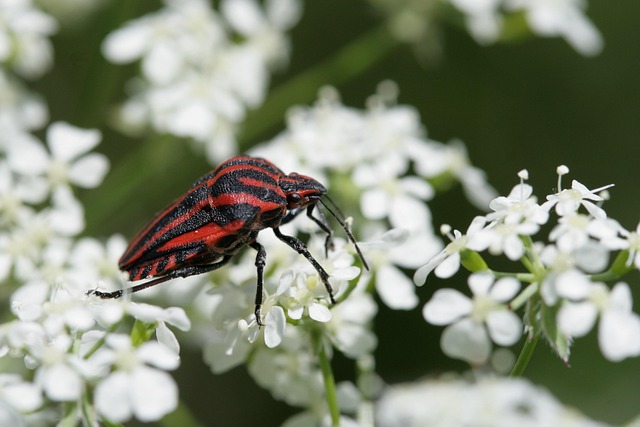Homeowners and gardeners often misuse harmful methods to control sowbugs, but these creatures play a vital role in ecosystem health. Eco-friendly sowbug solutions, like natural repellents, traps, and predators, offer sustainable alternatives to toxic chemicals. By minimizing environmental impact and promoting a balanced ecosystem, these methods ensure effective prevention and control without disrupting beneficial insects or wildlife. Adopting such strategies is crucial for agricultural settings, involving regular cleaning, physical barriers, and monitoring, alongside fostering habitats for natural predators like spiders and beetles.
“Unraveling the mysteries of sowbug management, this article aims to guide you through a web of misconceptions and offer practical insights. We explore the science behind these tiny creatures, addressing common myths head-on. From eco-friendly approaches to long-term sustainability, we provide effective strategies for control and prevention. Discover how natural solutions can be your secret weapon in managing sowbugs, ensuring a healthier and more environmentally conscious approach to pest control. Debunk, learn, and embrace eco-friendly sowbug solutions.”
Debunking Common Sowbug Myths: Separating Fact from Fiction
Many homeowners and gardeners often encounter sowbugs and turn to various methods for control, but not all practices are effective or environmentally friendly. It’s essential to separate fact from fiction when it comes to managing these tiny creatures. Common myths about sowbugs can lead to harmful chemical applications or inefficient techniques that may cause more harm than good.
One widely held belief is that sowbugs are destructive pests, but in reality, they play a crucial role in the ecosystem. These insects break down organic matter and contribute to nutrient cycling in soil. They are beneficial for garden health, especially in compost piles. Debunking this myth encourages gardeners to adopt eco-friendly sowbug solutions, such as natural repellents or targeted traps, rather than resorting to toxic chemicals that can harm beneficial insects and the overall ecosystem.
The Role of Eco-Friendly Solutions in Sowbug Management
In recent years, there’s been a growing interest in sustainable and eco-friendly solutions for pest management, including the control of sowbugs (also known as armadillos). This shift reflects a broader awareness of the potential environmental and health impacts of traditional chemical pesticides. Eco-friendly sowbug solutions focus on non-toxic methods that minimize harm to beneficial insects, wildlife, and the overall ecosystem. Natural predators like birds, frogs, and certain insects can play a significant role in keeping sowbug populations in check.
Additionally, habitat modification is a key component of eco-friendly management strategies. This involves removing sources of moisture and food that attract sowbugs and creating physical barriers to prevent their entry into buildings. Planting native vegetation around structures can also deter these pests as they prefer specific microclimates offered by non-native plants. These approaches not only reduce the need for chemical interventions but also promote a more balanced and healthy environment, ensuring long-term sowbug control without causing ecological disruption.
Effective Strategies for Preventing and Controlling Sowbug Infestations
Preventing and controlling sowbugs effectively is key to maintaining a healthy environment, especially in agricultural settings. One of the best strategies is implementing eco-friendly solutions, such as regular cleaning and sanitizing of areas prone to infestations. Sowbugs thrive in dark, moist places, so keeping these spaces clean and well-ventilated can significantly deter them. Additionally, using natural predators like spiders and certain insect species can be an effective, non-toxic approach to control their population.
Another powerful method is incorporating physical barriers. Sealing entry points and cracks where sowbugs might hide or enter helps prevent infestations. Using eco-friendly traps, such as those made with natural attractants like plant oils, can also capture sowbugs humanely. These methods, combined with regular monitoring, form a comprehensive strategy that supports sustainable sowbug management without resorting to harmful chemicals.
Long-Term Sustainability: Integrating Natural Solutions into Your Approach
In the quest for effective sowbug management, it’s easy to get caught up in quick fixes and chemical-based solutions. However, for long-term sustainability, integrating natural approaches is key. Eco-friendly sowbug solutions not only minimize environmental impact but also promote a healthier ecosystem within your property or garden. By embracing natural methods, you encourage the balance of beneficial insects that can help control sowbug populations naturally.
One such eco-friendly approach involves introducing predator insects like certain species of beetles and spiders that feed on sowbugs. Creating habitats that support these natural predators, through proper landscaping and organic gardening practices, can significantly reduce sowbug numbers over time. Additionally, using organic pesticides derived from natural ingredients, such as neem oil or diatomaceous earth, offers targeted control while minimizing harm to non-target species.
In addressing sowbug management, it’s crucial to separate fact from fiction. By understanding the role of eco-friendly solutions and implementing effective prevention strategies, homeowners can achieve long-term sustainability without resorting to harsh chemicals. Integrating natural methods into your approach not only benefits the environment but also creates a healthier living space. Embracing these eco-conscious practices ensures a balanced ecosystem while effectively managing sowbug infestations.
